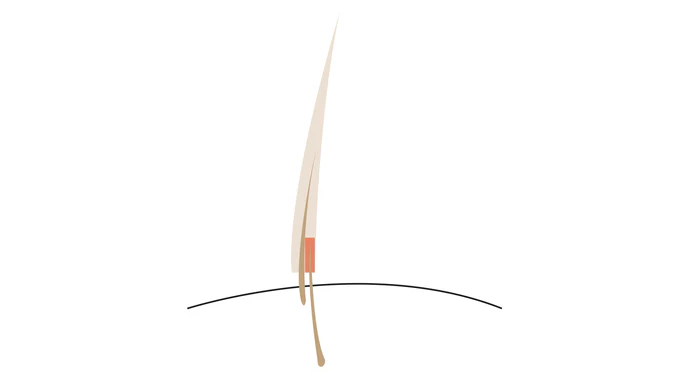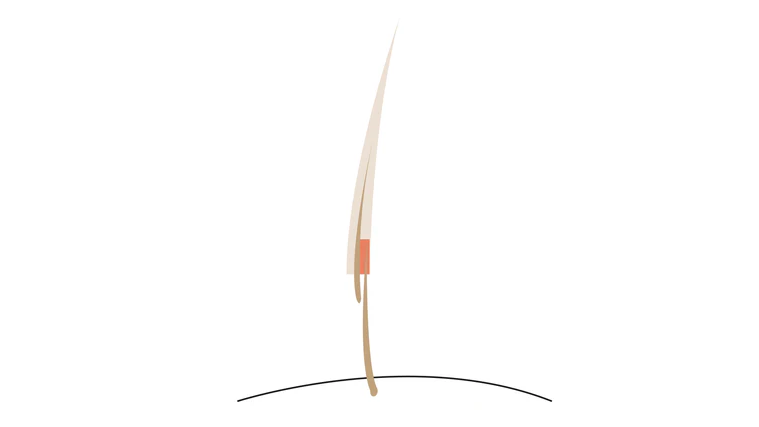Blog
Eyelash Extension Guide: How to Avoid Stickies When Lashing
Have you ever had a “sticky” situation where a lash extension gets glued to another, causing discomfort for your client? If you’ve been nodding your head, then you’re in the right place. Today, we’re going to dive into the world of lash stickies: what they are, why they happen, and most importantly, easy-peasy ways to prevent them.
The Nitty Gritty Of Lash Stickies
Stickies happen when a lash gets stuck to another neighbouring lash. Too much lash glue, incorrect placement, failing to isolate lashes properly, or not allowing the adhesive time to dry between applications causes lashes to stick together and cause drama. These unwelcome clumps can mess up your tools, create messy eyelash extensions, and generally just be frustrating to deal with.

Top Causes Of Lash Stickies
Once you know what causes lash stickies to develop, it becomes so much easier to banish them for good. With enough practice, you’ll be able to spot stickies from a mile away and prevent them from impacting your lash application process.
These are the red flags of lash stickies to be aware of when you apply extensions:
- Old or expired lash glue: Sticky, gloopy, old lash glue makes it virtually impossible to apply lashes cleanly and efficiently.
- Shaky hands: While they can be hard to avoid at times, nervous or shaky hands can cause delicate lashes to stick to one another when they shouldn’t.
- Weak grip tweezers: If your tweezers aren’t able to grip individual lashes properly, a clean application becomes very tricky.
- Lack of experience: Practice makes perfect, after all! The more time you spend working with these delicate products, the easier avoiding those dreaded lash stickies will be.
Just like any skill set, lash extension application takes time and effort to master. By being aware of common sticky causes, you can dodge them at every corner.
What Are The Different Types Of Lash Stickies?
The first type of stickie is when a short ‘baby lash’ gets stuck to an eyelash extension. These are one of the most common, and one of the most damaging types of stickies! Why?
The baby lashes are sometimes the hardest as they are short and harder to isolate. Also, baby lashes grow much quicker than a full-grown lash that is in its “resting stage”.
If a baby lash becomes stuck to an extension, it will keep growing and could simply push the extension lash to the side, creating a very unflattering look. Never underestimate these tiny baby lashes.


The second type of stickie is when 2 lash extensions are stuck together. This type of stickie is the easiest to spot when checking your work, and arguably the easiest to separate by gripping one eyelash extension with your isolation tweezers, and pulling the other one off of it with the lash tweezers you use for picking up eyelash extensions.
Finally, the third type of stickie is when two natural lashes are stuck together. This can happen if you’ve placed an eyelash extension on a natural lash but have taken it off again, either due to poor positioning or too much eyelash glue. With the natural lash still being covered in glue, it can easily adhere to the neighbouring lash when you come to re-isolate the surrounding lashes. These are the ones you have to watch out for because they are very easy to miss!

How Do You Fix Sticky Eyelash Extensions?
When applying eyelash extensions, you’ll have two sets of lash tweezers. These are going to be your best friends when removing an eyelash sticky.
- One tweezer will be used to hold one of the lashes.
- The other will hold the extension or lash that it has been glued to.
- Make sure your grip is firm, yet gentle on the lashes you’d like to separate.
- Next, gently peel the two lashes apart, being careful not to pull too hard on the natural lash.
- It’s ok if the lash extension pops off. A new one can be applied.
- Removing lash stickies is the most important thing
Sometimes you’ll want to use one tweezer to gently wiggle in between the two lashes. As long as you are calm and patient, stickies can be easy and pain free to remove!
How To Avoid Stickies When Lashing
Whether you are a seasoned lash tech or still a little new to the game, stickies are a fact of life.
But they shouldn’t happen all the time, and there are ways to prevent and avoid them. Many of the avoidance tactics relate to practice and skill development that takes time, but the rest come down to a few simple, easy tricks that any level of lash artist can use.
- Triple-Check Your Work
Don’t rush; take a moment to double or even triple-check each set. You might find a rogue stickie hiding in there. Remove it carefully with a pair of tweezers or a lash brush. - Use tape to isolate your lashes
After your client has undergone their cleansing pretreatment routine, lift and set the natural lashes back with a bit of tape.
This will help keep the natural lash line as consistent and still as possible so that you can see exactly where to place each lash extension going forward. It will also give you better insight into where to place your lash glue and which angles will be best for a clean, sticky-less lash line. - Move slowly and carefully
The key to perfectly isolated lash extensions and sticky-free applications is to move slowly and intentionally. As the saying goes, haste makes waste, and in this case, the old adage certainly rings true.
Don’t rush through your process. From the glue dropping and the lash dipping to the lash isolation and application itself — take it easy. A few deep breaths between each lash application will keep you calm and ensure the adhesive is dry, and it will make your client feel calmer, too. - Be mindful of how much lash glue you use
Too much lash glue is one of the biggest culprits behind lash stickies. You should only have one or two drops of lash adhesive at your station, and dipping your lashes into them should be a gentle and conservative practice.
The best depth to dip your individual false lashes into glue is a few tiny millimetres, depending on the length of the lash. The longer the lash, the deeper the dip.
The quality of the lash adhesive you use also plays a major role in how many stickies are likely to develop. Fresh, well-maintained lash glue will produce the best results (naturally), while old or expired glue will be gloopy, causing stickies to form.

Lash stickies may be annoying and common, but with the right strategies and tools, they don’t have to derail the lash artistry process.
By developing a strong lash isolation technique, utilising lash mapping, and investing in the right eyelash extension glue, you can prevent stickies from occurring and become a better, more precise lash technician. Say no to stickies and yes to sleek precision!
